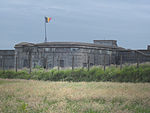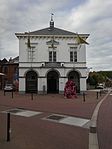Willebroek

Willebroek (Dutch pronunciation: [ˈʋɪləbruk], old spelling: Willebroeck) is a municipality located in the Belgian province of Antwerp. The municipality comprises the towns of Blaasveld, Heindonk, Tisselt, Klein Willebroek, and Willebroek proper. In 2021, Willebroek had a total population of 27,081. The total area is 27.41 km². Willebroek is linked to Brussels by the Willebroek Canal. Willebroek is also home to the Kanaalfeesten, a yearly festival that takes place throughout the town which includes live concerts (mostly of local bands) and general festival attractions, like a mini roller coaster, a duck shoot, etc. At Klein-Willebroek the Harmonium Art museuM on pump organs is established in the former Church of the Immaculate Conception. The city is subject of the song De Brug van Willebroek by Wannes Van de Velde.
Excerpt from the Wikipedia article Willebroek (License: CC BY-SA 3.0, Authors, Images).Willebroek
Victor Dumonlaan,
Geographical coordinates (GPS) Address Nearby Places Show on map
Geographical coordinates (GPS)
| Latitude | Longitude |
|---|---|
| N 51.066666666667 ° | E 4.3666666666667 ° |
Address
Victor Dumonlaan 15
2830 (Willebroek)
Antwerp, Belgium
Open on Google Maps










